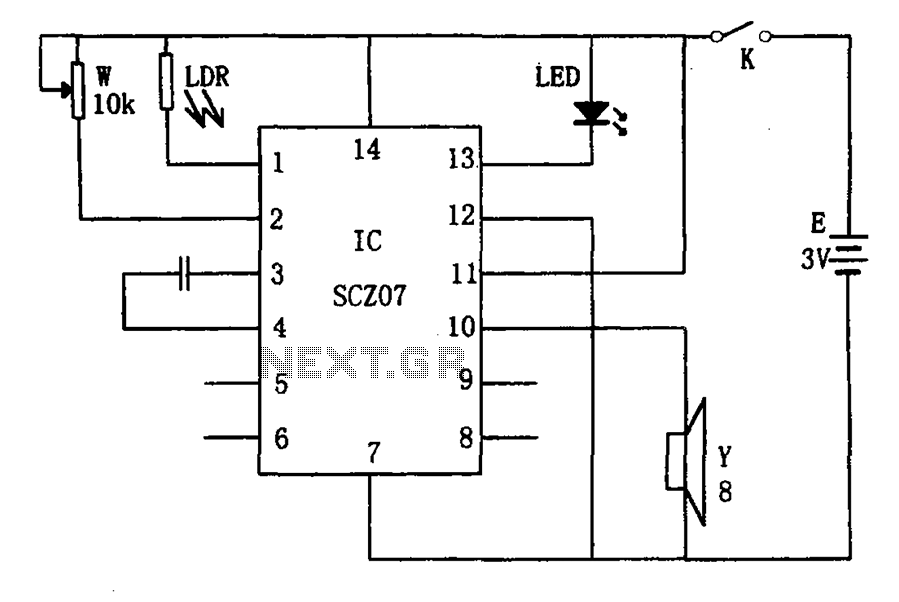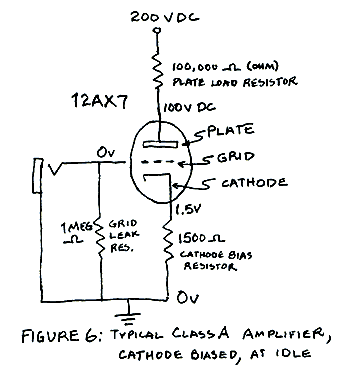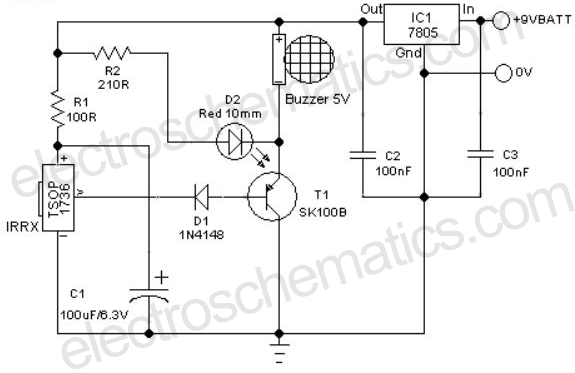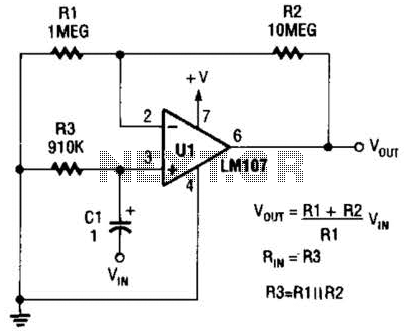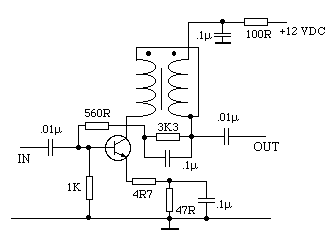
Receiver Audio Circuit
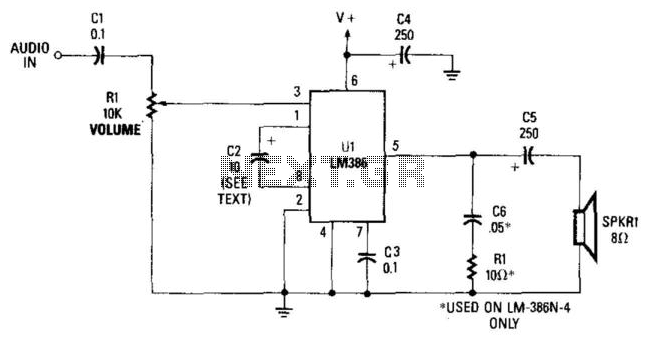
This simple receiver AF amplifier can supply several hundred milliwatts to an 8-ohm speaker. The gain is approximately 200X. If high gain is not required, C2 can be removed, resulting in a gain of 20. R1 and C6 are essential components; without them, ultrasonic oscillations in the range of 30 to 60 kHz may occur. C6 can be 0.1 µF for all LM386N versions to protect against these oscillations. The supply voltage typically ranges from 6 to 12 V. A heatsink is not necessary, but proper grounding is essential.
This audio frequency (AF) amplifier circuit is designed to operate with an LM386N integrated circuit, which is a low-voltage audio amplifier. The circuit can deliver several hundred milliwatts of output power into an 8-ohm speaker, making it suitable for various audio applications, including small audio systems and personal projects.
The amplifier's gain is set at approximately 200X, which is achieved through the configuration of the external components. For applications where a lower gain is sufficient, capacitor C2 can be omitted, reducing the gain to about 20X. This flexibility allows the circuit to be tailored to specific requirements.
Resistor R1 and capacitor C6 are critical for the stability of the amplifier. R1 serves as a biasing resistor, ensuring that the amplifier operates within its optimal range. Capacitor C6, typically valued at 0.1 µF, acts as a bypass capacitor that filters out high-frequency noise and prevents ultrasonic oscillations from occurring, which can lead to distortion and reduced performance.
The circuit operates effectively within a supply voltage range of 6 to 12 V, making it compatible with various battery and power supply configurations. Notably, the LM386N does not require a heatsink under normal operating conditions, simplifying the design and assembly process. However, it is crucial to ensure good grounding practices are followed to minimize noise and interference, enhancing the overall performance of the amplifier.
This amplifier circuit can be utilized in a variety of applications, including portable audio devices, small public address systems, and as a building block for more complex audio projects. Proper selection of components and layout considerations will further optimize the performance and reliability of this simple yet effective audio amplifier. This simple receiver AF amplifier can supply several hundred milliwatts to an 8- speaker. The gain is about 200X. If high gain is not needed, C2 can be deleted and a gain of 20 will be obtained. R1 and C6 are musts, otherwise ultrasonic (30 to 60 kHz) oscillations might occur. C6 can be 0.1 ¥ on all LM386N versions for protection against these oscillations. The supply voltage is typically 6 to 12 V. No heatsink is necessary, but good grounding is a must.
This audio frequency (AF) amplifier circuit is designed to operate with an LM386N integrated circuit, which is a low-voltage audio amplifier. The circuit can deliver several hundred milliwatts of output power into an 8-ohm speaker, making it suitable for various audio applications, including small audio systems and personal projects.
The amplifier's gain is set at approximately 200X, which is achieved through the configuration of the external components. For applications where a lower gain is sufficient, capacitor C2 can be omitted, reducing the gain to about 20X. This flexibility allows the circuit to be tailored to specific requirements.
Resistor R1 and capacitor C6 are critical for the stability of the amplifier. R1 serves as a biasing resistor, ensuring that the amplifier operates within its optimal range. Capacitor C6, typically valued at 0.1 µF, acts as a bypass capacitor that filters out high-frequency noise and prevents ultrasonic oscillations from occurring, which can lead to distortion and reduced performance.
The circuit operates effectively within a supply voltage range of 6 to 12 V, making it compatible with various battery and power supply configurations. Notably, the LM386N does not require a heatsink under normal operating conditions, simplifying the design and assembly process. However, it is crucial to ensure good grounding practices are followed to minimize noise and interference, enhancing the overall performance of the amplifier.
This amplifier circuit can be utilized in a variety of applications, including portable audio devices, small public address systems, and as a building block for more complex audio projects. Proper selection of components and layout considerations will further optimize the performance and reliability of this simple yet effective audio amplifier. This simple receiver AF amplifier can supply several hundred milliwatts to an 8- speaker. The gain is about 200X. If high gain is not needed, C2 can be deleted and a gain of 20 will be obtained. R1 and C6 are musts, otherwise ultrasonic (30 to 60 kHz) oscillations might occur. C6 can be 0.1 ¥ on all LM386N versions for protection against these oscillations. The supply voltage is typically 6 to 12 V. No heatsink is necessary, but good grounding is a must.

